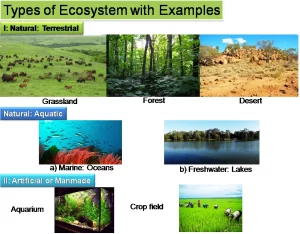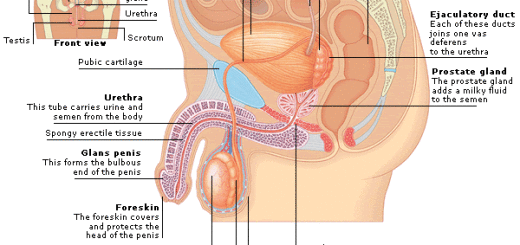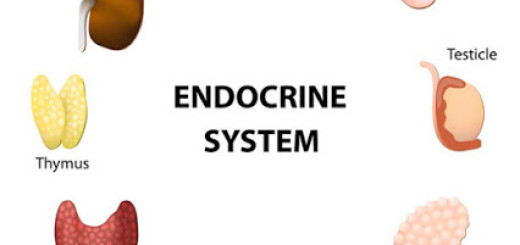Classification of ecosystem, Environmental balance and Factors that keep the environmental balance
There are natural areas that contain some living organisms such as lions, elephants, deer, and plants, and Some non-living things such as air, soil ….etc, Each one of these natural areas is called an Ecosystem, Ecosystem is any natural area including living organisms (as plants and animals) and non-living things (as water, soil and air).
Classification of ecosystem
The components of the ecosystem: Any ecosystem consists of two main components which are living organisms such as plants, fungi, algae and animals, and non-living things such as air, soil, and water, Ecosystems may be classified according to their sizes into :
- Small as an area of land or water pond.
- Large as a forest, a desert, or an ocean.
- Very large as the universe and is considered the unified ecosystem.
There are many relationships between the components of the ecosystem as:
- The relationship between plants and the soil is that the plants depend on the soil to absorb the water and salts that are necessary to make their food by the photosynthesis process.
- The relationship between the plants and animals, where the animals feed on the plants to get food and energy.
- The relationship among different animals, where some animals feed on other animals to get food and energy.
When the relationships (interactions) among the components of the ecosystem are stable (balanced), an environmental balance occurs.
Environmental balance
Environmental balance is the balance among the components of the ecosystem, The interaction among environmental components is a continuous process, This interaction keeps the balance among these components unless a disturbance arises as a result of many factors.
Factors that harm (disturb) the environmental balance
Natural changes: Changes in the natural conditions (circumstances) in the ecosystem cause a disturbance that leads to the disappearance of some organisms, the appearance of other organisms, and environmental imbalance that may take a short or a long period until a new balance occurs in this environment.
Examples: In ancient eras, changes in the natural conditions of the environment leads to the disappearance of dinosaurs causing their extinction.
Man interference: Some human activities lead to the disturbance of the environmental balance, Among these human activities are cutting down trees, burning forests, Polluting the environment, and Eroding the soil.
Examples: Cutting down trees as green plants ( trees ) are the main source of food and oxygen for all living organisms.
Factors that keep the environmental balance
Some food relationships help in keeping the environmental balance such as Predation and saprophytism.
First: The effect of predation on keeping the environmental balance
Predation organizes the numbers of preys’ populations, where predators help prey to get rid of weak or sick members and let the strong ones reproduce adding strong members to the population.
If there were no predators in the ecosystem, the environmental balance will be disturbed as the number of prey will increase to an extent that the available food resources become insufficient (not enough) for preys, Competition appears among prey’s population, so, preys will die, because they have not shelter and become weak ( infected with diseases ) which lead to their death.
When rabbits are introduced to an island that has a suitable environment with much food and no natural enemies, The number of rabbits will increase and competition appears among them to get food, so they will die causing an environmental imbalance.
Predation relationship plays an important role in keeping the balance of ecosystems because the predation relationship organizes the numbers of preys’ population.
Second: The effect of saprophytism ( saprophytic organism ) on keeping the environment balance
The saprophytic organisms (decomposers) as bacteria and fungi help the environment in getting rid of the bodies of dead organisms by decomposing them, recycling the chemical elements found in the bodies of dead organisms (as carbon, nitrogen and phosphorous ) to the environment, to make other living organisms benefit from them.
If there were no saprophytes in the ecosystem, the environmental balance will be disturbed as the Earth’s surface will be covered with the bodies of dead organisms, Chemical elements found in the bodies of dead organisms will not be recycled to the environment, so the other living organisms can not get benefit from these elements.
Man can benefit from saprophytic organisms in many industries such as :
- Food industry: Some saprophytic organisms are used in making some types of food such as cheese, bread, yoghurt, vinegar, and alcohol.
- Drugs industry: Some saprophytic organisms are used in manufacturing some drugs (medicines) such as antibiotics.
- Leather tanning industry: Some saprophytic organisms are used in the tanning of natural leather.




